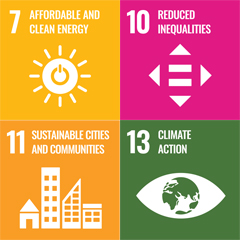The Role of Complexity in Achieving the SDGs
16 апреля 2024 г.
Апрель 2024 г. ・ minutes reading time
The role of Complexity in Achieving the SDGs
By: Federico Moscatelli
How can this novel economic indicator help policymakers achieve the Sustainable Development Goals?

Complexity is an indicator that measures the levels of know-how embedded into innovation ecosystems. Ever since it’s conception in 2009, the complexity literature views economic development as a structural transformation process. Countries grow by transforming their productive structure from one dominated by low-tech, ubiquitous activities to a more advanced structure with rarer outputs.
Decent work and economic growth (SDG 8)

Economic literature has found a strong relationship between complexity and economic performance. Not only are developed nations more diversified but they are also more complex. Vibrant innovation ecosystems can generate elaborate and unique technologies that lead to the creation of complex products.
- Studies find that economies attaining technologically complex productive structures typically see higher economic performance. In effect, it has been estimated that a 10 percent increase in complexity is associated with 0.45 percent increase in GDP per capita growth.
- Countries with higher complexity are also more likely be resilient by observing longer-run patterns of economic performance.
- Innovation ecosystems that have high complexities relative to their income level grow faster than those that underperform in terms of complexity, while economies with lower complexity measures have a more turbulent economic growth path.
Inequalities, sustainability and climate action (SDGs 7, 10, 11, 13)

Moreover, the effect of higher complexity goes beyond economic growth. In particular:
- Income inequality is lower in countries that export more complex goods.
- Increasing complexity is associated with income convergence within urban areas.
- Complex economic activities tend to concentrate in large cities.
- Complex countries patent more often in green technologies.
- Economically complex countries have lower greenhouse emission
The role of innovation policies (SDG 9)

Overall, while the benefits of increasing complexity can be appealing, innovation policy must consider its side effects, particularly its spatial consequences. The continuous concentration of high skilled workers in the most complex cities will continue to drain resources from the peripheral regions. This is why it is important for these to identify the potential paths towards increasing complexity that many innovation economists aim to provide.
Want to become a specialist on the subject? Dive into our curated list of complexity research!
Related stories

What Do We Know About the Gender Gap in Innovation?
Women innovating, inventing, and creating face constant factors that impede their activities. What can economic research tell us about these and inform gender balance policies?

Investing in agricultural innovation to achieve the SDGs
Investing in agricultural innovation is one key to achieving the SDGs. Find out why policymakers should continue to invest in agricultural R&D and create incentives and mechanisms for private sector participation.